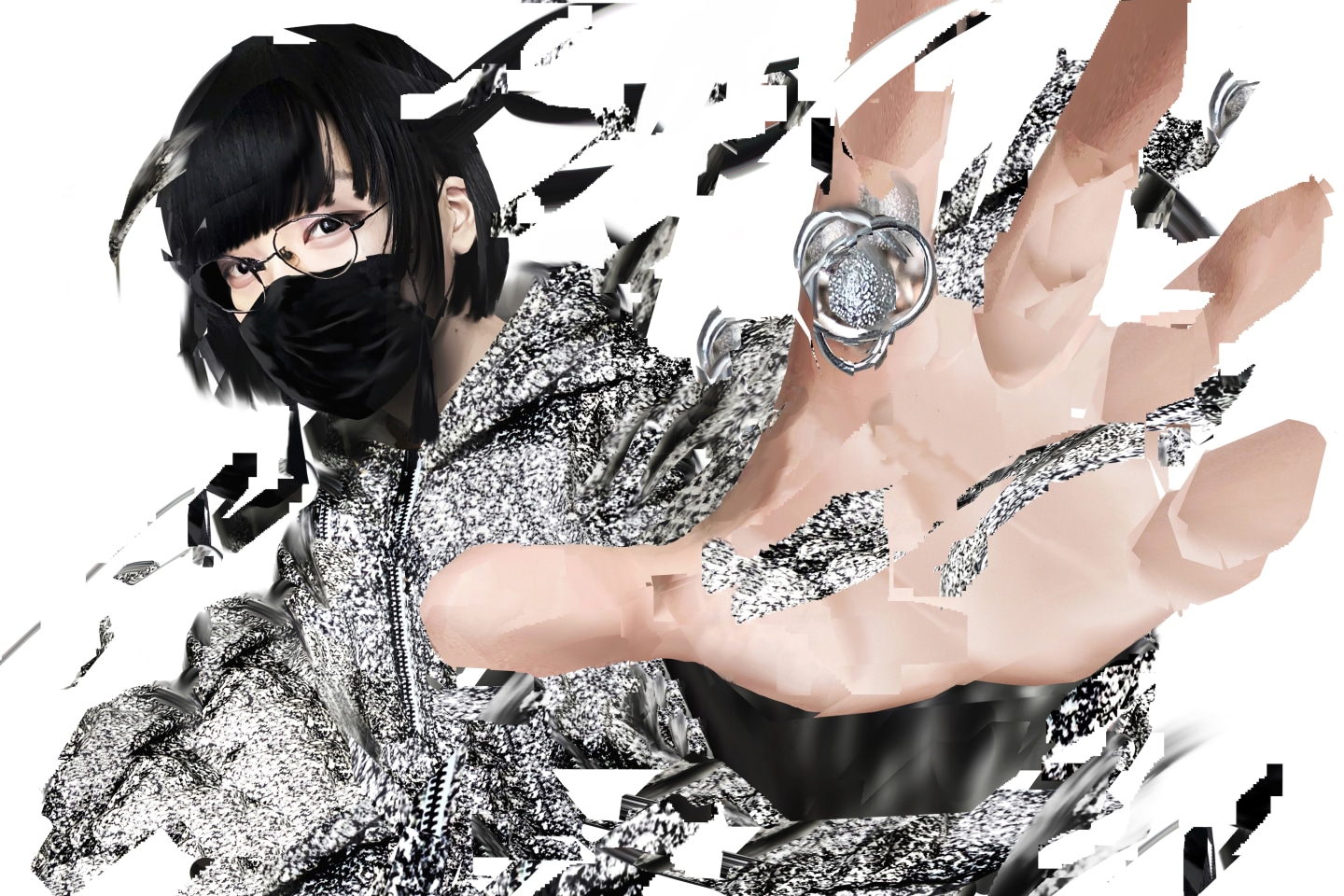Hakushi Hasegawa
Naoki Takehisa
Discover Blogly is The FADER’s curated roundup of our favorite new music discoveries.
Listening to Japanese experimental artist Hakushi Hasegawa’s full-length debut Mahōgakkō over the past couple of weeks, I kept thinking of the quote SOPHIE gave to a documentary on Arte in 2018. “You have the possibility with electronic music to generate any texture, in theory, and any sound,” she said. “So why would any musician want to limit themselves?”
Hasegawa broke into the Japanese underground in 2017 with Air Ni Ni, a hyper-jazz record that jumped between tempos and time signatures like a lounge musician hurtling through portals into other dimensions. They’ve developed a more global cult fame since, playing at Porter Robinson’s mid-pandemic Second Sky — our own Jordan Darville wrote that their set “showed an internal life thriving in the face of an uncertain and despairing world” — and getting nods at Paris Fashion Week. Their sound has sharpened as their profile has grown. Tracks like “Otogasuru,” a collaboration with the J-pop artist yuigot, proved that Hasegawa could play to a mass audience without losing their chaotic instincts, while 2022’s solo “Uni” proved that those instincts hadn’t dulled at all.
Mahōgakkō is something else entirely though, a relentless clash of breakbeats, blast beats, and glitches glued together, miraculously, by blissful melodies. It’s a deeply complex, richly textured record, and even Hasegawa’s attempts to downplay the precision involved are baffling — they say they use an “Explanatory Ratio” to “guide” their work. “This is not a sophisticated musical theory at all,” they say, “but simply a subjective scale that looks at the balance of sounds that are explainable to me and sounds that are not explainable to me, and whether or not they are distributed in the ratio that I set for each piece. This is the only thing I am intentional about in my work.” Trying to decipher that while listening back to Mahōgakkō gave me a headache.

What’s magic about Hasegawa’s work, though, is that these tracks aren’t math problems to be solved, riddles crafted by the artist to confuse or confound the listener. The hyperactive energies that animate the record read instead as democratic; to paraphrase SOPHIE, this is music that resists elitism and academia. The opening song, “Departed,” speeds along above a pummeling beat, the sound of a dozen indecipherable instruments clashing together in perfect staccato, but Hasegawa’s voice careens into hummable hooks. “KYŌFUNOHOSHI” has that same frantic feel, but its high-up horns could have been ripped from a gospel-rap record a decade ago. Even the wildest, fastest, least predictable tracks on Mahōgakkō seem designed to induce euphoria, not anxiety.
That sense of bliss is magnified on the often startlingly pretty softer tracks, when the beats fizzle out and Hasegawa’s voice floats into looping pseudo-strings. “Repeal (Tekkai)” is an audible daydream, “Forbidden Thing (Kimmotsu)” is a stunning ballad, all the more heartstopping for its sparseness sandwiched between two truly odd little skits. The record ends with Hasegawa’s bizarre interpretation of a bombastic power ballad, helmed by a piano but punctuated by shouts and enormous bells in place of a snare, compression and Auto-Tune rendering everything ghostly and thrilling. Best of all is “Boy’s Texture,” a mix of acoustic guitar loops, Hasegawa’s oddball ad-libs twisted beyond recognition (“Taste me! Taste me! Taste me!”), and falsetto vocals that make no more sense in translation than they do in Japanese.
Maybe there are reference points for all of this — some of the ambient moments reminded me of Sam Ray’s work as Ricky Eat Acid and heroin party, while the fringe ideas might not sound completely out of place in a scene that produced Bis Kaidan — but that’s not the point. Beneath the chaos and carnage, Hakushi Hasegawa sounds limitless.




